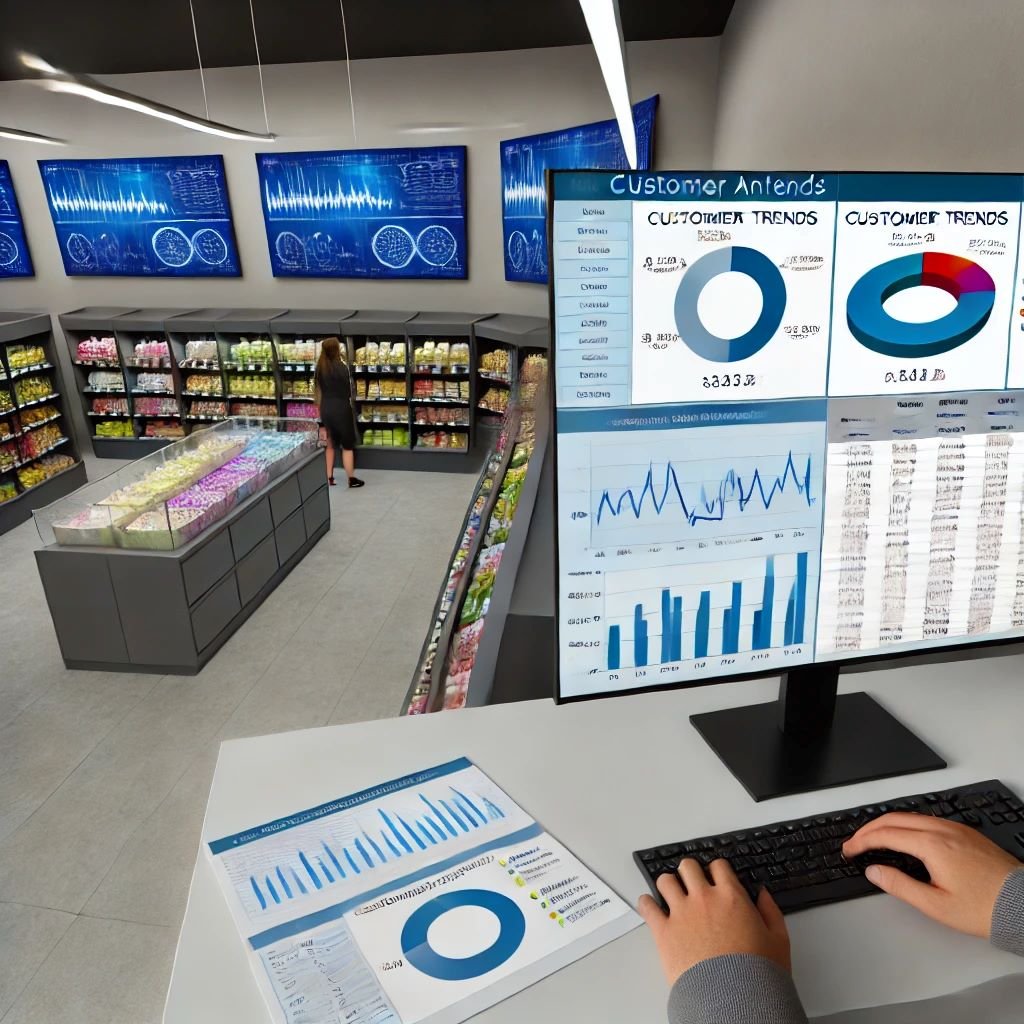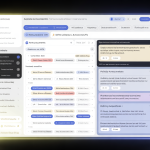
Analyzing Customer Trends: A Comprehensive Report
Introduction
Understanding customer trends is essential for businesses aiming to optimize their marketing strategies, product offerings, and overall operations.
By analyzing customer trends, businesses can identify patterns in customer behavior and understand the impact of seasonal trends on their sales and engagement.
This comprehensive report delves into the methodologies and benefits of analyzing customer trends, focusing on identifying patterns in customer behavior and the impact of seasonal trends.
Identifying Patterns in Customer Behavior
Analyzing customer behavior involves examining various data points to uncover patterns and insights that can inform business decisions.
The following sections outline the key methods and metrics used to identify these patterns.
1. Customer Segmentation
Customer segmentation involves dividing a customer base into distinct groups based on shared characteristics.
This helps businesses tailor their marketing efforts and product offerings to specific segments. Common segmentation criteria include:
- Demographics: Age, gender, income, education level, etc.
- Geographics: Location, urban vs. rural, climate, etc.
- Psychographics: Lifestyle, values, interests, etc.
- Behavioral: Purchase history, product usage, brand loyalty, etc.
By segmenting customers, businesses can develop targeted strategies that resonate with each group, improving engagement and conversion rates.
2. Purchase Patterns
Analyzing purchase patterns helps businesses understand what products are being bought, how often, and in what quantities. Key metrics include:
- Frequency of Purchase: How often customers buy a particular product or service.
- Average Order Value (AOV): The average amount spent per transaction.
- Repeat Purchase Rate: The percentage of customers who make multiple purchases over a period.
Understanding purchase patterns allows businesses to identify best-selling products, optimize inventory levels, and develop effective pricing and promotional strategies.
3. Customer Journey Mapping
Customer journey mapping involves tracking the steps customers take from initial awareness to purchase and beyond.
This provides insights into customer interactions with the brand at various touchpoints. Key stages include:
- Awareness: How customers discover the brand.
- Consideration: How customers research and evaluate products.
- Purchase: The process of buying the product.
- Post-Purchase: Customer support, reviews, and repeat purchases.
Mapping the customer journey helps businesses identify pain points, streamline processes, and enhance the overall customer experience.
4. Sentiment Analysis
Sentiment analysis uses natural language processing (NLP) to analyze customer feedback from various sources, such as reviews, social media, and surveys.
This helps businesses understand customer emotions and opinions about their products or services. Key aspects include:
- Positive, Negative, and Neutral Sentiment: Categorizing feedback based on the overall tone.
- Emotion Detection: Identifying specific emotions like joy, frustration, or disappointment.
- Trend Analysis: Monitoring changes in sentiment over time.
Sentiment analysis provides valuable insights into customer satisfaction and areas for improvement.
5. Lifetime Value (LTV) Analysis
Customer lifetime value (LTV) measures the total revenue a business can expect from a single customer over the duration of their relationship.
This helps businesses prioritize high-value customers and develop strategies to increase customer retention. Key components include:
- Average Purchase Value: The average amount spent per purchase.
- Purchase Frequency: How often the customer buys.
- Customer Lifespan: The length of time the customer continues to buy from the business.
Understanding LTV enables businesses to allocate resources effectively and maximize long-term profitability.
Seasonal Trends and Their Impact
Seasonal trends significantly impact customer behavior and sales, and understanding these trends is crucial for effective planning and execution of marketing and sales strategies.
The following sections explore the importance of seasonal trends and how businesses can leverage them.
1. Identifying Seasonal Trends
Seasonal trends refer to predictable patterns in customer behavior that occur at specific times of the year. These can be influenced by:
- Holidays: Christmas, Halloween, Valentine’s Day, etc.
- Weather Changes: Summer, winter, spring, and fall seasons.
- Cultural Events: Festivals, sports events, and national holidays.
Identifying seasonal trends involves analyzing historical sales data to detect recurring spikes or dips in demand.
This helps businesses anticipate changes in customer behavior and adjust their strategies accordingly.
2. Impact on Sales and Marketing
Seasonal trends can have a significant impact on sales and marketing efforts. Key considerations include:
- Inventory Management: Ensuring adequate stock levels to meet increased demand during peak seasons and avoiding overstock during off-peak periods.
- Promotional Strategies: Timing promotions and discounts to coincide with seasonal trends to maximize impact.
- Product Launches: Introducing new products at times when customer interest and demand are high.
By aligning sales and marketing strategies with seasonal trends, businesses can enhance their effectiveness and drive higher sales.
3. Case Studies of Seasonal Trends
Examining real-world examples of seasonal trends helps illustrate their impact and the strategies businesses use to leverage them.
a. Retail Industry
In the retail industry, the holiday season from November to December is a significant period.
Businesses often see a surge in sales due to holiday shopping, Black Friday, and Cyber Monday events. Strategies used include:
- Early Promotions: Starting sales early to capture customer interest and spread out demand.
- Omnichannel Strategies: Integrating online and offline channels to provide a seamless shopping experience.
- Personalized Marketing: Using customer data to create personalized offers and recommendations.
b. Food and Beverage Industry
Seasonal trends in the food and beverage industry are influenced by holidays, weather, and cultural events.
For example, ice cream sales peak during summer, while hot beverages see increased demand in winter. Strategies used include:
- Seasonal Menus: Offering seasonal specials and limited-time items to attract customers.
- Local Sourcing: Using seasonal ingredients to enhance freshness and appeal.
- Event Marketing: Promoting products around events like barbecues in summer and holiday feasts in winter.
Tools and Technologies for Analyzing Customer Trends
1. Customer Relationship Management (CRM) Systems
CRM systems, such as Salesforce, HubSpot, and Zoho CRM, help businesses manage customer interactions and analyze behavior. Key features include:
- Data Integration: Consolidating data from various sources to provide a holistic view of customer interactions.
- Analytics and Reporting: Generating reports and insights on customer behavior, sales performance, and marketing effectiveness.
- Automation: Automating marketing and sales processes to improve efficiency and personalization.
2. Business Intelligence (BI) Tools
BI tools, such as Tableau, Power BI, and Qlik Sense, provide advanced data visualization and analysis capabilities.
These tools help businesses uncover patterns and trends in customer data. Key features include:
- Interactive Dashboards: Creating dynamic visualizations to explore data and identify insights.
- Data Integration: Connecting to multiple data sources to provide comprehensive analysis.
- Advanced Analytics: Using machine learning and AI to uncover hidden patterns and predict future trends.
3. Marketing Automation Platforms
Marketing automation platforms, such as Marketo, Pardot, and Mailchimp, help businesses execute and analyze marketing campaigns. Key features include:
- Campaign Management: Planning, executing, and tracking marketing campaigns across multiple channels.
- Customer Segmentation: Segmenting customers based on behavior, demographics, and preferences.
- Analytics and Reporting: Measuring campaign performance and analyzing customer engagement.
Benefits of Analyzing Customer Trends
1. Enhanced Customer Insights
Analyzing customer trends provides deep insights into customer behavior, preferences, and needs.
This helps businesses understand their customers better and tailor their strategies accordingly.
2. Improved Customer Engagement
By identifying patterns and trends, businesses can create more relevant and personalized experiences for their customers.
This improves engagement and fosters stronger customer relationships.
3. Optimized Marketing Strategies
Understanding customer trends enables businesses to develop more effective marketing strategies.
By targeting the right customers with the right messages at the right time, businesses can increase their marketing ROI.
4. Increased Sales and Revenue
Leveraging customer trends helps businesses capitalize on opportunities and mitigate risks.
By aligning their efforts with customer behavior and seasonal trends, businesses can drive higher sales and revenue.
5. Competitive Advantage
Businesses that effectively analyze and act on customer trends gain a competitive edge.
They can anticipate changes in the market, respond quickly to customer needs, and stay ahead of competitors.
Challenges and Considerations
1. Data Quality
The accuracy and reliability of customer trend analysis depend on the quality of the underlying data.
Businesses must ensure their data is clean, complete, and accurate to generate meaningful insights.
2. Data Privacy
Analyzing customer data raises privacy concerns.
Businesses must comply with data protection regulations and ensure they handle customer data ethically and securely.
3. Integration
Integrating data from multiple sources can be challenging.
Businesses need to ensure their systems are compatible and that data flows seamlessly between different platforms.
4. Expertise
Analyzing customer trends requires expertise in data analysis and interpretation.
Businesses may need to invest in training or hire skilled analysts to leverage the full potential of their data.
Conclusion
Analyzing customer trends is essential for businesses looking to optimize their strategies and drive growth.
By identifying patterns in customer behavior and understanding the impact of seasonal trends, businesses can make data-driven decisions that enhance customer engagement, improve marketing effectiveness, and increase sales and revenue.
Leveraging advanced tools and technologies, businesses can gain valuable insights into their customers and stay ahead in a competitive market.
As customer preferences and behaviors continue to evolve, ongoing analysis of customer trends will remain a critical component of successful business strategies.


